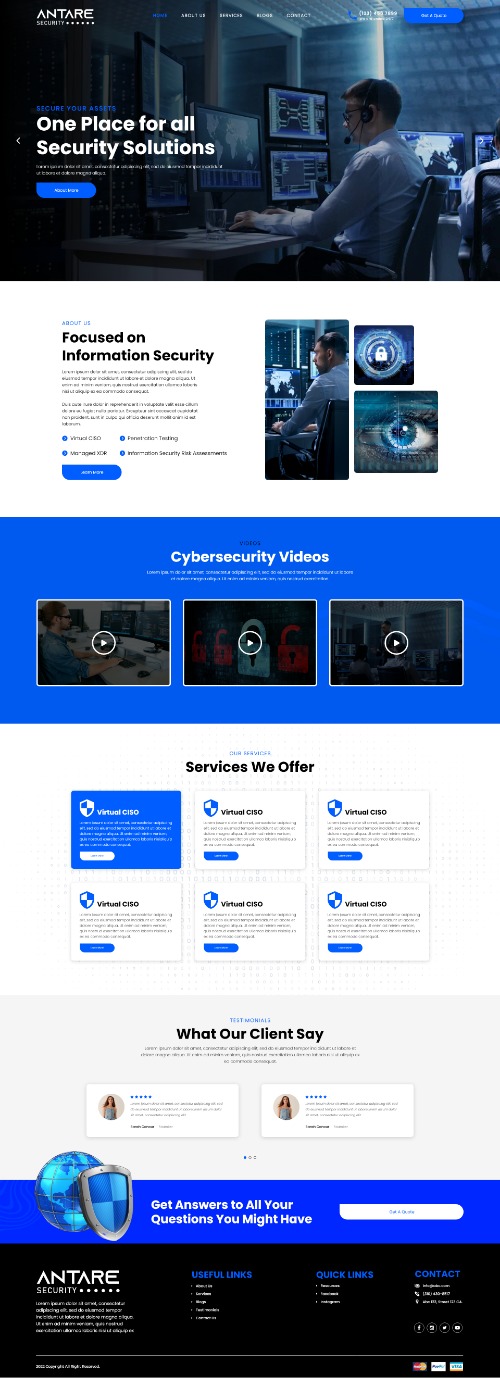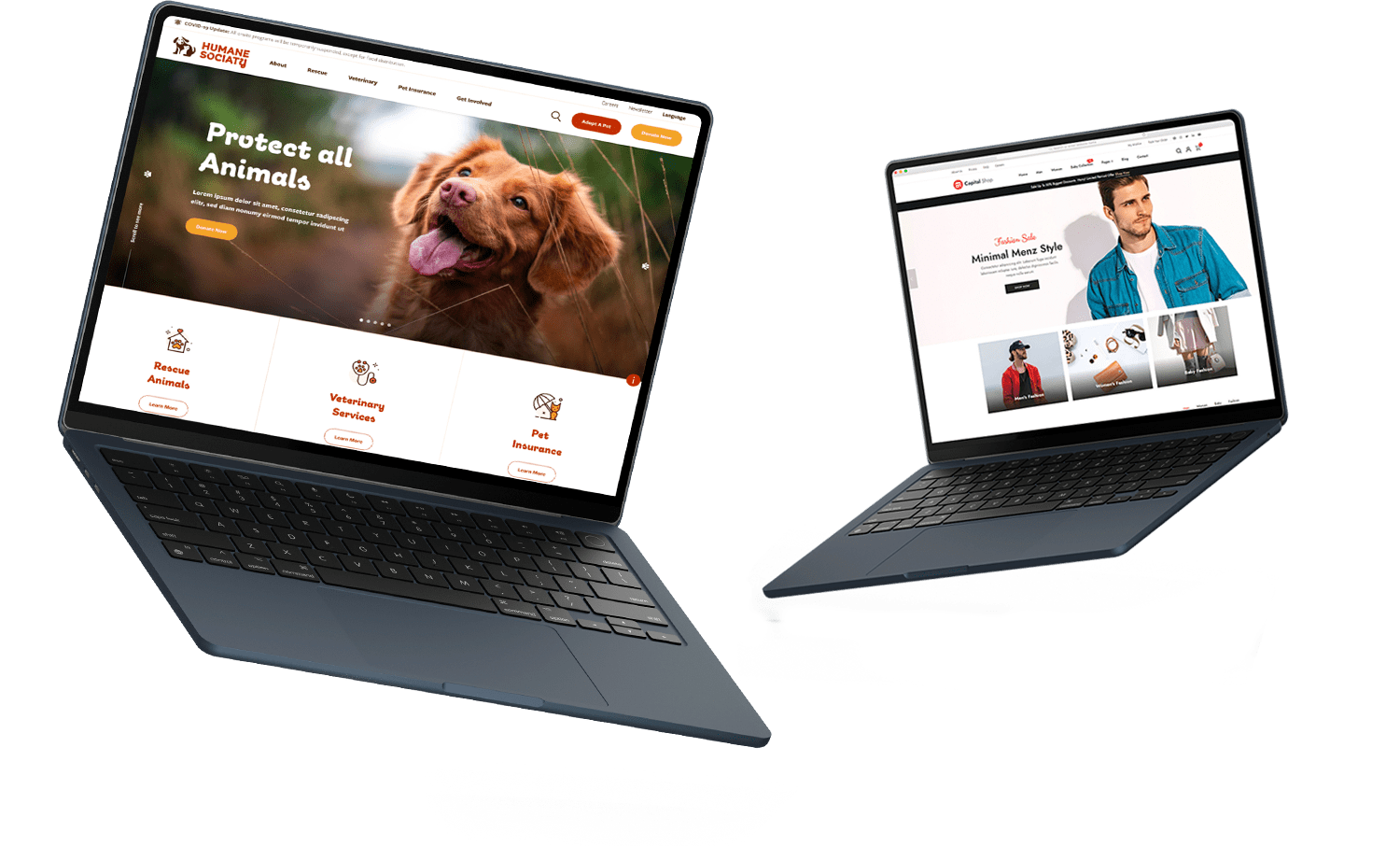Augmented Reality (AR) Is A Game Changer For Shopify Stores in 2024
It's not so long since several applications of augmented reality have begun to make a great impact on sales that have purposeful meaning. The use of AR is becoming widespread in enterprises. The growth rate of the AR market is however very impressive given that the sector is still quite young. Most of the AR early users in the last few years have been shopping online and people are interested in the so-called 'metaverse’. But this is not only for them.
More and more consumers are feeling the need to experience the products and interact with the brands virtually, even before making a purchase. This kind of excitement has the potential to create $5 trillion worth of value in the economy before 2030, as the top players are already able to test metaverse commerce for home and food, fitness, and clothing.
With augmented reality shopping, consumers can virtually try on and sieve through the goods using an electronic device such as a smartphone and virtual reality devices.
AR can either immerse the clients in a physical store, giving them a sense of using the products, or place the product in the client's background or body, for instance, in the case of clothing.
In the early days of the pandemic, people have been spending a lot of time on the internet. New approaches have become necessary for interacting with the audiences and for making them use the e-commerce or social commerce platforms of the brands.
Some of the advocates of AR mobile apps from the very beginning were voiced by the two major players in social networks—Snapchat and Instagram, also they gave the opportunity for the brands to add AR filters to their products that the consumers can use.
Demonstrating products can be considered an apparent use of augmented reality for brands. The virtual fit, also known as virtual try-on technology, is most useful in the fashion and beauty industries. Augmented reality applications for Shopify are gaining acceptance and popularity among people all over the world.
Stay Informed About the Latest Shopify Design Trends
A leading Shopify store is not just functional but also trendy. It has to capture the latest design trends that fascinate customers and streamline their experience. Shopify is changing its tools and features. Businesses can use them to drive growth, strengthen customer relationships, and create memorable interactions.
Here are the top trends that are shaping the design of Shopify websites:
Mobile-Centric Experiences
With mobile shopping as the new norm, Shopify website design services focus on making mobile-friendliness the key area of being fast, seamless, and intuitive. Mobile-focused designs bring in the following:
- Lightning-fast loading time for better retention of users
- Higher mobile engagement with a higher conversion rate
- Device-friendly uniform structure makes navigation easy
Custom-made Shopify Themes for Brand Identity
Uniquely appealing and visually attractive, thus epitomizing brand identity are the choices made by the new-age consumer. A certified shop website designing agency specializes in constructing a customized theme, therefore bringing in.
-
Unique, brand-specific visual
-
Streamlined user experiences for effortless shopping
-
Increased website performance plus better navigation and page loads
Headless Commerce for Flexibility
Headless commerce decouples the front and back ends of Shopify stores, allowing brands to deliver personalized front-end experiences while leveraging Shopify's powerful back-end capabilities. Some of the benefits are:
-
Flex, multi-channel selling
-
This one would simplify compatibility with applications like CRM and ERP.
-
Increased scalability to accommodate growth
AI-powered personalization
Personalized product recommendations, customized search, and dynamic content: AI is changing the face of the appearance of Shopify stores. Companies that design websites in Shopify can help businesses in their processes through AI in these ways:
-
Make interesting related suggestions
-
Improve the satisfaction of customers and the conversion rate
-
Make personal marketing
Augmented Reality: Shopping in Interactive Worlds
Augmented reality redrew the way customers relate to the product online and allows them to view the product before buying it. The embedding of Shopify AR in a brand affords the opportunity to create:
-
Interesting and immersive experiences
-
Build customer confidence through real-time product views.
-
Convert more through better-informed decisions
Mobile Optimization Tips for Shopify Stores
A potential buyer visits your smartphone-optimized Shopify store and wishes to see your products. However, rather than an enjoyable browsing experience, they are greeted with an awkward, sluggish loading interface, which annoys them till they bounce back.
Looking to make your store work smoothly? Then this is the best time to hire a shopify website design company which can be at your service.
Optimize Your Product Images for Mobile
The images of your products can either enhance or degrade the overall loading time of the store. Use tools for their compression and maintain their quality. Reduced sizes allow faster uploads, which are very important, especially on phone networks.
Make Navigation Accessible for Your Users
While browsing on the website, users often have the need to reach the navigation comfortably and as soon as possible. A sticky navigation bar keeps the menu in view even when the user scrolls down the page, enhancing the experience for mobile users. Make sure that even a fantastic Shopify theme does not leave the mobile design aside. Inspect how your pictures and media visually appear on the mobile. Do not allow product images to be blurry or pixelated on your store.
Always Showcase Your Product Images
Put your products at the front and center. You already know that some mobiles have limited space. Make sure your product photos appear in motion and are consistent. Select the appropriate file format for Shopify, which is typically.png or.jpg, use appropriate alt attributes, and compress photos.
Speed Up Your Mobile Pages
If your website has pages that load very slowly, the chances of bounce rates increase. There are various techniques to speed up your site, such as optimizing images, minimizing code, using CDN, and so on. Compress and optimize images, blinds, styles, and banners. Use browser caching so that data is stored in the user's device for ease of reloading. With loads of content on the webpage, focus on encouraging the user by loading the content that is above the fold first so that the user feels like there is progress as the rest of the page loads.
Adjust Font Size For Mobiles
Do not let small letters discourage customers who shop via mobile phones. Make sure the font size is above 16 pixels for easier reading. Avoid serif fonts such as Times New Roman when designing for small screen sizes, opt for sans serif fonts such as Arial or Helvetica instead. Responsive design will accept media queries to change font sizes and even the entire layout depending on screen size.
Vital Buying Trends on Shopify To Watch Out in 2024
The shift in shopping had been more pronounced than anyone could have predicted. Looking back at the time when COVID-19 hit small businesses the hardest, and with that, new shopping behaviors emerged and demanded loyalty in the wake of rising costs and inflation.
We dug into the data and extracted expert predictions to help your customers meet their shopping expectations and get better shopify website design services.
Online Buyers Impacted By Inflation Are Looking for Deals
Although it is expected that the market for luxury products will experience some increase this year. Less spending led to a decrease in brand loyalty where customers were already looking for the best offers. Tendencies in purchasing are going towards purchase power rationality and the act of searching for better prices.
Brand Loyalty is Decreasing
Various factors can cause your clients to seek the services of your competitors. On one hand, competition is increasing while the consumer is spending less, therefore driving consumers to be selective on how and where they spend their money.
However, it is not only price that leads to diminishing loyalty. Consumer behaviors are becoming a major problem, and many people have resorted to brands, which are engaging in activities in line with their beliefs. More so, customers want fast, tailored, and interactive shopping experiences and are ready to go elsewhere in search of such.
This is where you can reward your loyal customers with offers, perks, and exclusive discounts. Reevaluate your inventory to avoid losing customers to out-of-stock products.
Discovering Products Remain Powerful On TikTok
Social e-commerce is globally rising, one platform seems to be taking the lead, and that is TikTok. The application in question has reported in 2023 that the chances of discovering brands and their products on their platform is 1.7 times higher than compared to any other platform. The social network was made shoppable last year as well, cashing in on trends like the widely popular #TikTokMadeMeBuyIt.
So TikTok is like the secondary sales channel for your e-commerce store where you can target millennials and Gen Z and sell your products to them. As more and more young people and teenagers are shopping via mobile phones, this is where you can invest in vertical videos of your products and upload them on TikTok and even on Instagram reels.
Building Relationships to Start Locally
The fact that shoppers are going back to shopping in physical stores is welcome news for businesses with little investments. However, even such kinds of businesses have to up their game and focus more on providing the consumers with value in terms of brand experience. DTC brands are not immune to the trend, as many of them are also increasingly adding elements involving physical spaces to a blended customer experience.
It doesn’t matter if you have no retail presence yet, you can always sell your story to your customers as well as your products. Offer them value and appreciate their presence, and engage with them directly on the community channels.
How Simple Web Designs are Boosting Shopify Conversions
Did you know that bad website design and functioning cause more than 70% of online shoppers to abandon their carts? This is often overlooked and also reminds us about how the custom shopify website design matters the most.
Here are some of the best Shopify themes to design shopify websites and attract more users.
Best for: Fashion brands, visual storytelling, beginners, small budgets
Price: Free
Notable features: Sticky header, large media
It is built for upcoming fashion brands, Dawn is a free theme on Shopify with a minimalist design that lets big style shine brighter on every device.
Best for: Food and drink brands, retail businesses, high-volume businesses.
Notable features: Store locator, event calendar, age verifier pop-up
Designed specifically for local retailers, food manufacturers, and eateries, Local is a feature-rich theme that facilitates multichannel selling. Personalize this dynamic theme with over 20 adaptable sections.
Best for: Home and décor brands, large catalogs, dropshipping
Notable features: Quick view, stock counter
Are you an e-commerce business with a vast product catalog? The Warehouse theme can easily manage large collections thanks to its advanced filtering and sorting capabilities. This design is best suited for drop shippers, high-traffic retailers, and brands that offer flash sales frequently or introduce new products.
Best for: Sports and recreation brands, large imagery
Notable features: Hero videos, promo banners
Responsive is a theme that emphasizes the product above all else and finds a good middle ground in features offered as well as their pricing. This Shopify template allows you to display large lifestyle or product photos and videos comfortably.
Best for: Beauty brands, visual storytelling, beginners, small budgets
Price: Free
Notable features: Enhanced search, mega menu
Another free Shopify template developed for businesses that value effective branding is Sense. If your brand heavily relies on a brand story to market its products, then this template is perfect as it allows you to make the brand story very large. The minimal design allows for the effective showcasing of products and images.
Best for: Baby and kid brands, high-volume stores
Want to have a lot of versatility in your store? One of its premium themes, Broadcast, has over 20 preset section templates that can be rearranged and altered. The design is perfect for baby and kids brands or any other large-scale e-commerce in need of advanced functionalities and speed.








.jpg)

.jpg)








